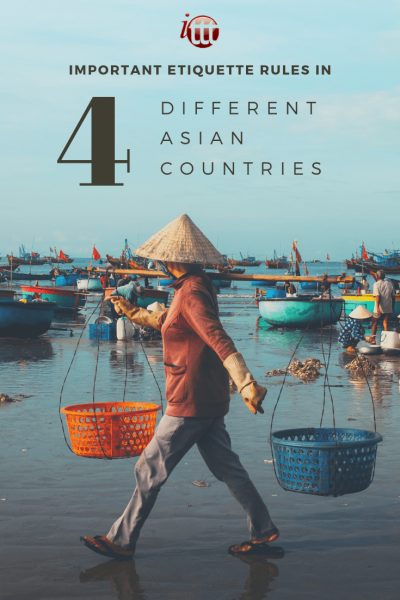Etiquette Rules in 4 Different Asian Countries

If you want to be a TEFL teacher, it is important to make sure you are as well prepared as you can possibly be before entering a classroom. It is equally important to have a good understanding of the country and culture you are hoping to make your home while you are teaching. Below I look at some important aspects of etiquette in different countries in Asia.
Listen to this blog post:
Teachers hold a position of respect in many Asian countries and are expected to behave in a way that reflects that respect. Dress for teachers tends to be formal and women should avoid wearing anything too revealing. Although many locals understand a foreign TEFL teacher’s lack of understanding about local customs, taking the time to learn and show interest can make a real difference to your experience.

China
In China you should avoid pointing when you are speaking to another person and whistling is considered rude. When dining, it is polite to taste all the dishes that you are offered by your host. Placing your chopsticks upright in your bowl is similar to joss sticks which are a symbol of death, so this should be avoided. Shaking hands is an appropriate greeting but you should wait for the Chinese person to offer their hand first. The most common form of greeting is a bow or a nod.
Also read: The 8 Best Countries in Asia for Teaching English Abroad
Japan
Do not point at things and do not blow your nose in public. When visiting a person’s home you should bring a gift and you should take off your shoes before entering their house. Finishing all of the food on your plate or drink in your glass is a sign that you want some more. If you have had enough, leave something on your plate or in the glass. The bow is the common way of greeting in Japan with higher status people getting a deeper bow than others. Usually, a slight bow is acceptable as is a handshake. Japanese people tend not to use the word ‘no’, expect less definite expressions such as ‘maybe’ to actually mean no.

South Korea
As in many Asian countries, beckoning someone with your index finger is considered extremely rude; instead you should point your hand with the palm down and waggle your fingers towards yourself. When giving or receiving gifts you should use your right hand with you left hand touching your right wrist or elbow. The traditional greeting in Korea is the bow, though this may also include a handshake. Touching your right forearm with your left hand when shaking hands, is a sign of respect. Say goodbye with a bow when leaving social events.
Also read: Top 10 Cities in Asia with the Highest Demand for English Language Teachers
Thailand
The head is of great importance in Thailand and you should never touch another person on the head. The feet are considered dirty and should not be pointed at anyone or used to move anything. Gift giving is not as formal as in other parts of Asia, but bringing friends and colleagues gifts of food to share after you have been away is appreciated. Thais greet each other with a wai (placing the palms of both hands together with fingers extended). A smile in Thailand can mean anything from an apology to a sign that the person is embarrassed.

Are you ready to teach English in Asia?
Apply now & get certified to teach english abroad!
Speak with an ITTT advisor today to put together your personal plan for teaching English abroad!
Send us an email or call us toll-free at 1-800-490-0531 to speak with an ITTT advisor today.
Related Articles:
- Top 4 Tips How to Find a Teaching Job in China
- 5 Reasons To Take A TEFL Course Right Now - Even If You Are Not Leaving Yet | ITTT | TEFL Blog
- How Studying Abroad in Taiwan Made Me Become An English Teacher In China
- The Impact of Positive Motivation on an ESL Classroom
- You’re Never Too Old to Change Your Life and Do a TEFL Course | ITTT | TEFL Blog
- Getting Student Placement Right - The Best Desk Arrangements for EFL Students




